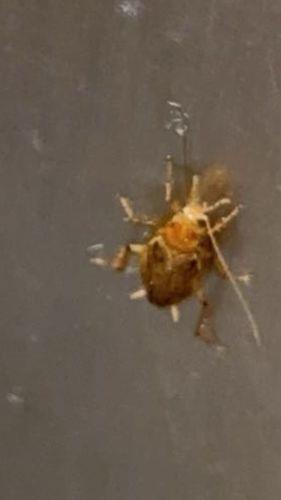Cockroach (likely German or American Cockroach based on appearance and common indoor presence)
Scientific Name: Periplaneta americana (American Cockroach) or Blattella germanica (German Cockroach)
Order & Family: Order Blattodea, Family Blattidae (for American Cockroach) or Ectobiidae (for German Cockroach)
Size: German Cockroach: 1/2 to 5/8 inch (1.3-1.6 cm). American Cockroach: 1.5 to 2 inches (3.8-5 cm).

Natural Habitat
Primarily indoor pests, found in warm, humid, and dark environments such as kitchens, bathrooms, basements, drains, and wall voids. They thrive in areas with available food and water sources.
Diet & Feeding
Omnivorous scavengers. They eat almost anything, including human food scraps, decaying organic matter, glue, paper, fabric, and even other insects.
Behavior Patterns
Cockroaches are primarily nocturnal, hiding in cracks and crevices during the day and emerging at night to forage for food. They are social insects but do not form colonies in the same way as ants or bees. They are known for their rapid reproduction rates. They can run very quickly and are agile, making them difficult to catch. They are known to be resilient and can survive for a period without their heads.
Risks & Benefits
Risks: Cockroaches can carry and spread various pathogens, including bacteria (like Salmonella and E. coli), viruses, and parasitic worms, contributing to food poisoning and other diseases. Their droppings and shed skins can trigger allergies and asthma attacks, especially in children. They can contaminate food preparation surfaces and stored food. Benefits: In natural environments, some species play a role in decomposition, but for common pest species, benefits are negligible.
Identified on: 9/2/2025